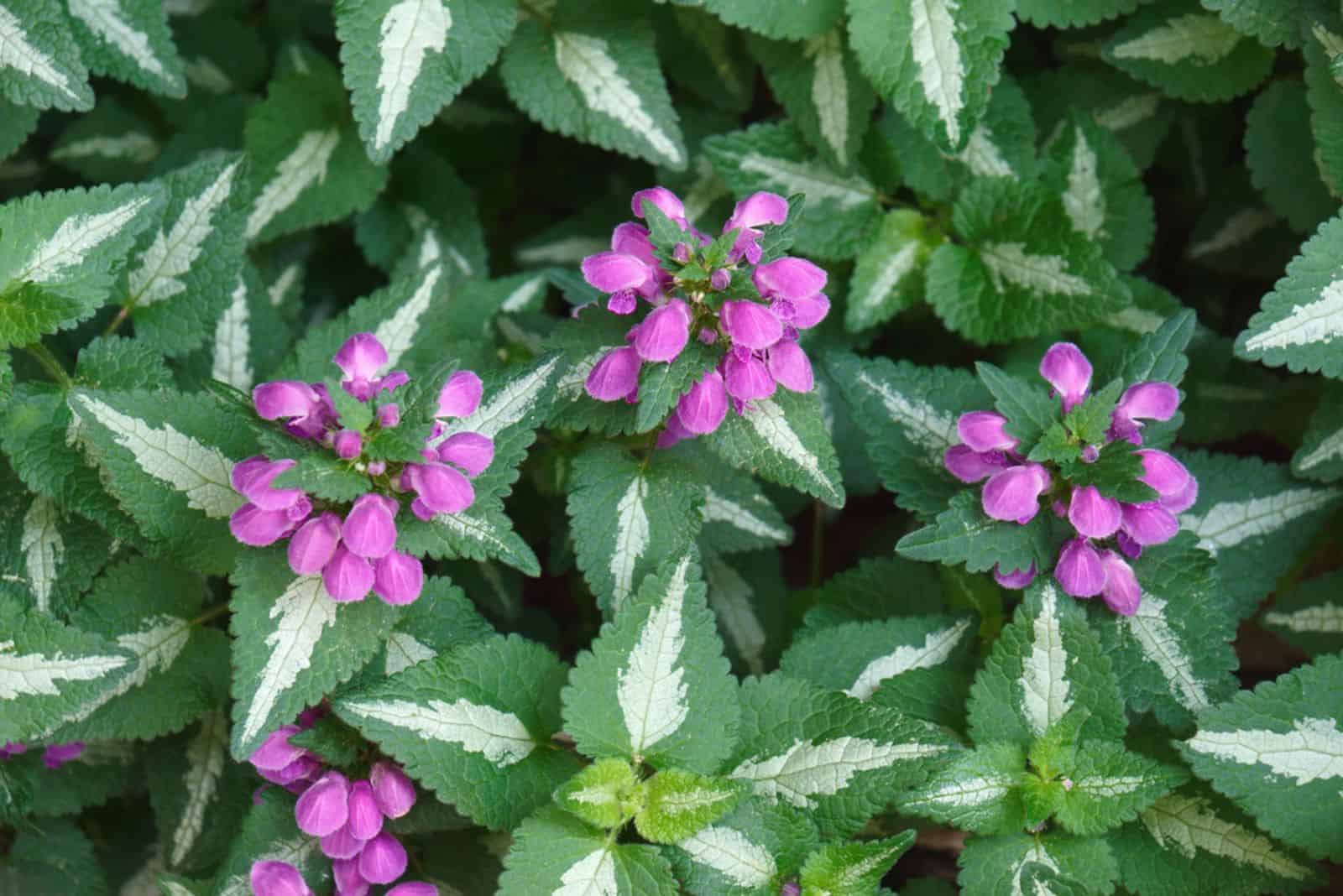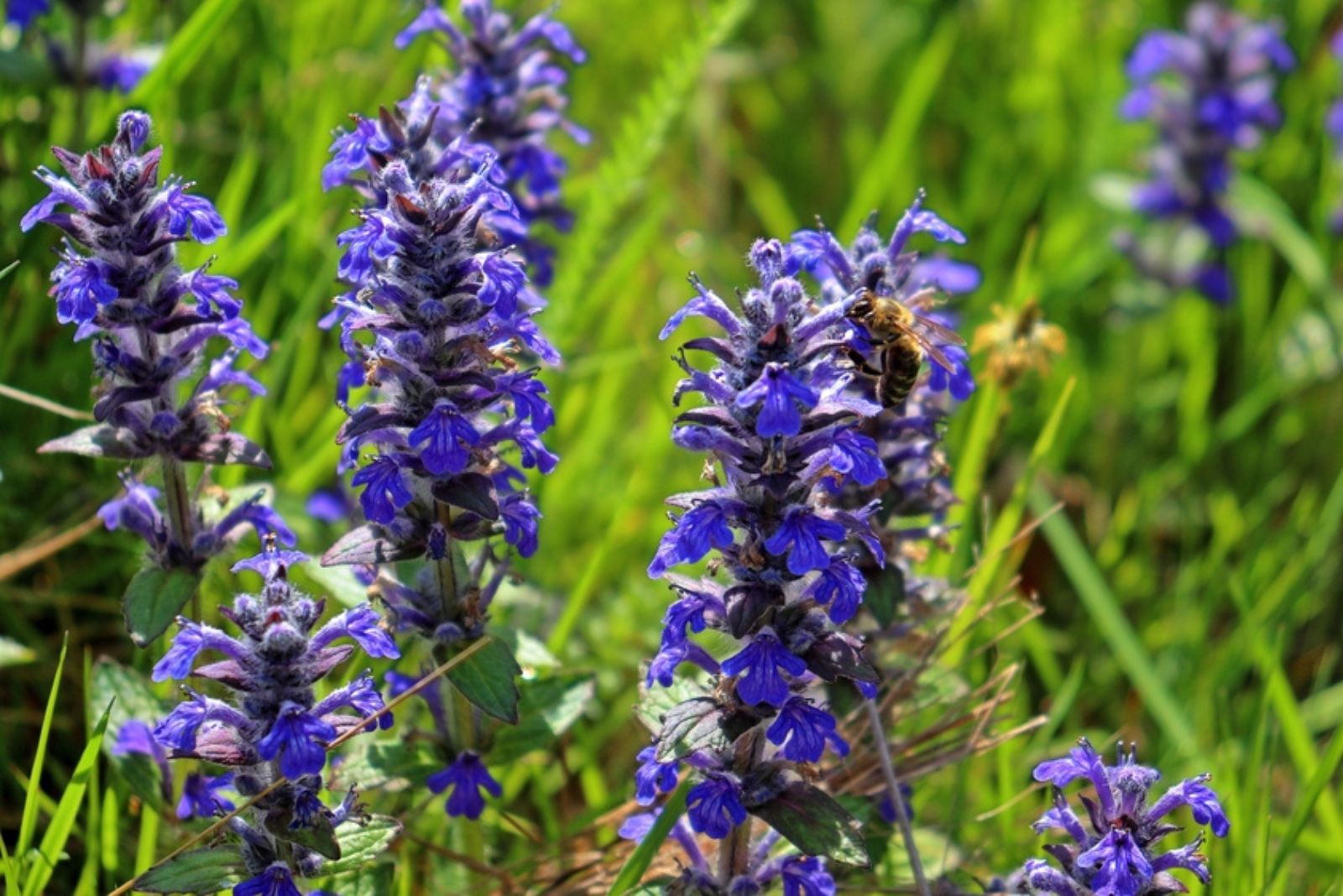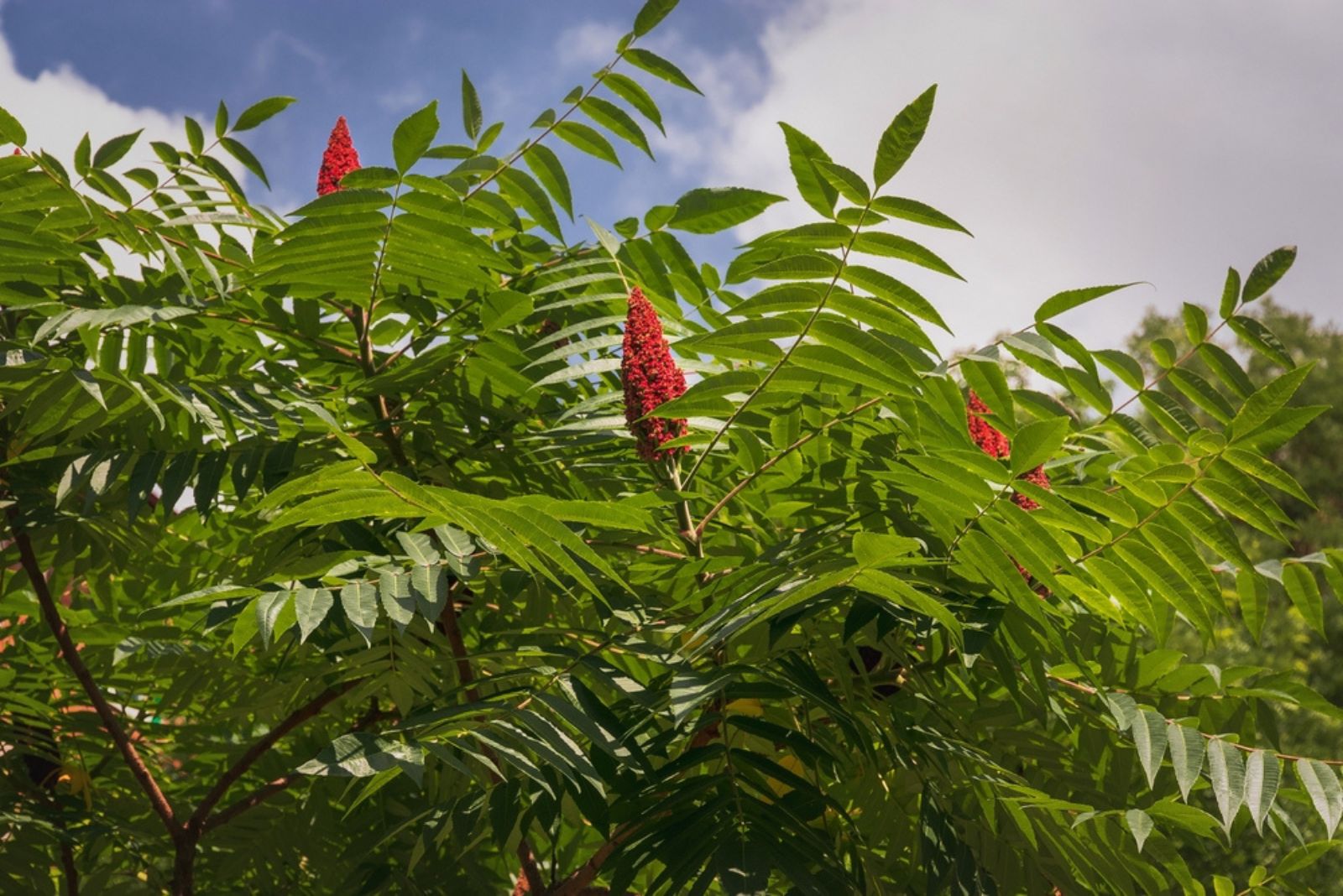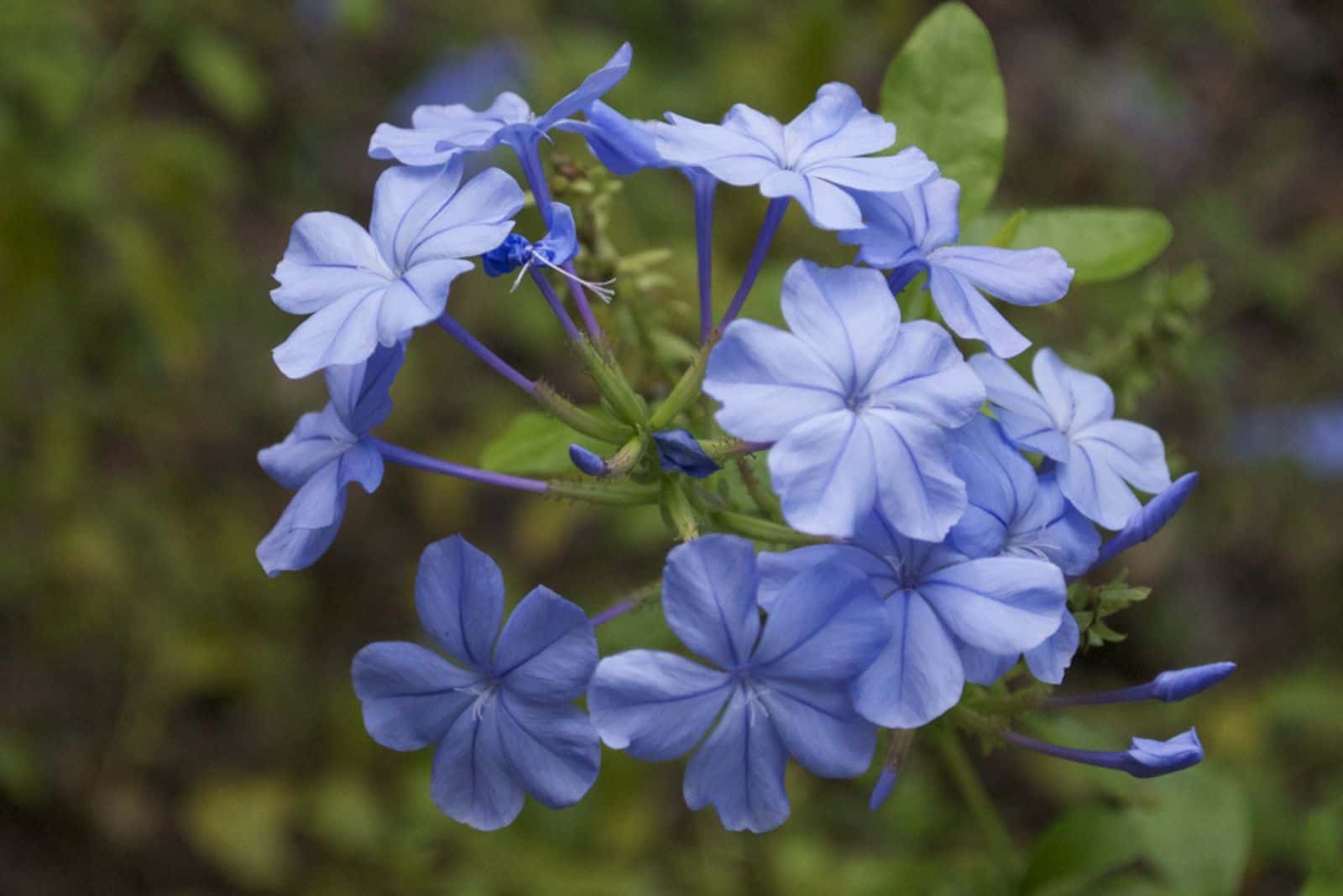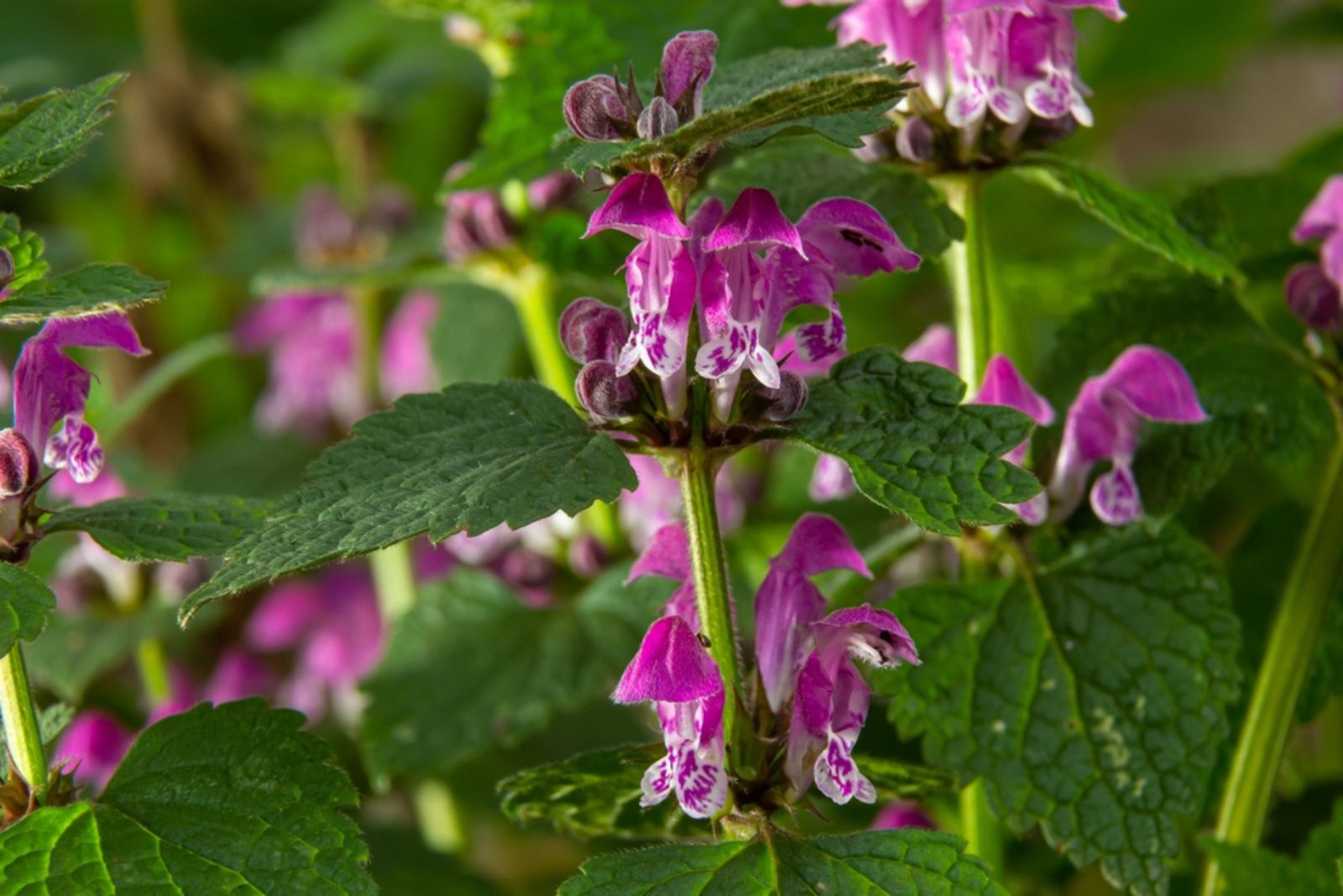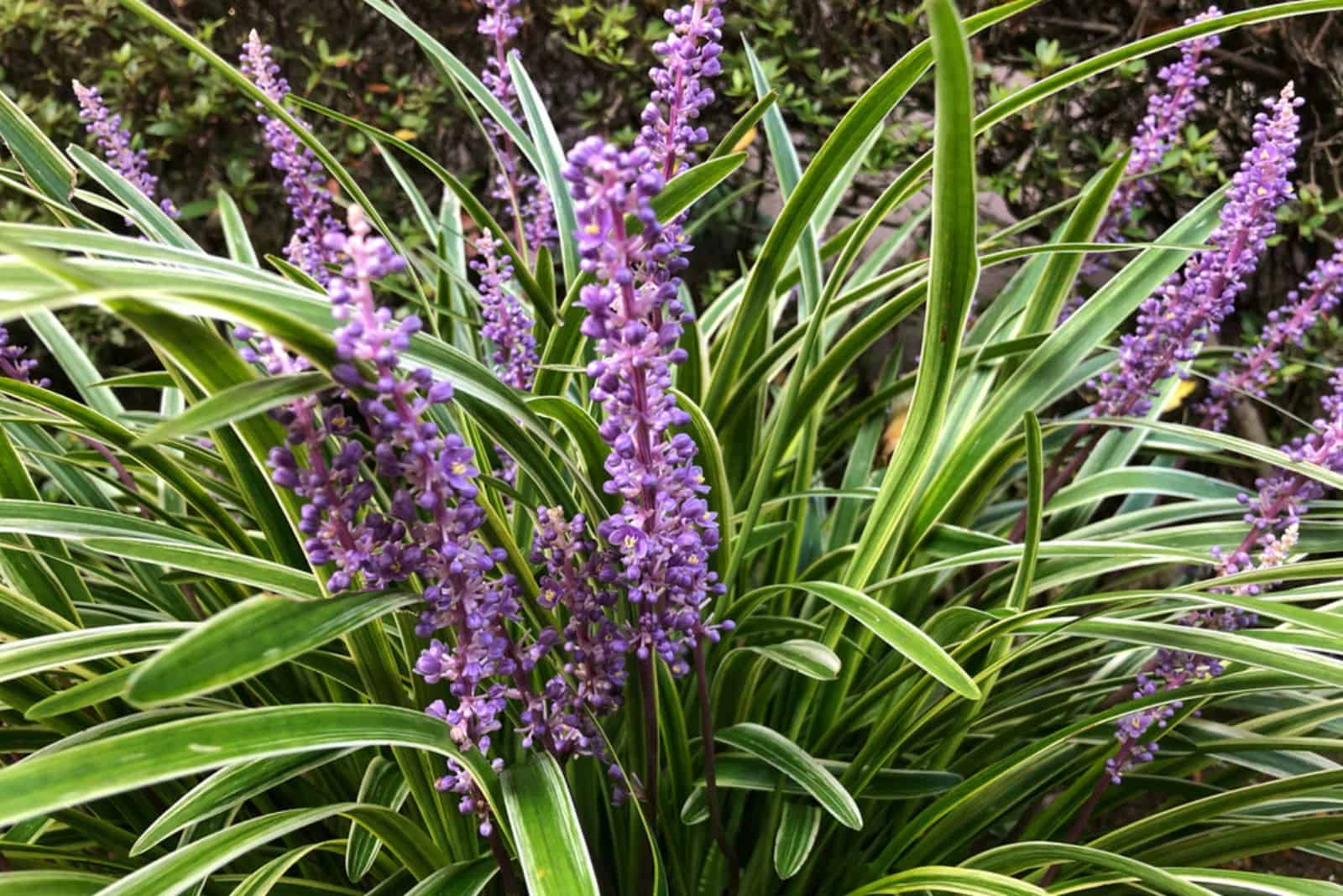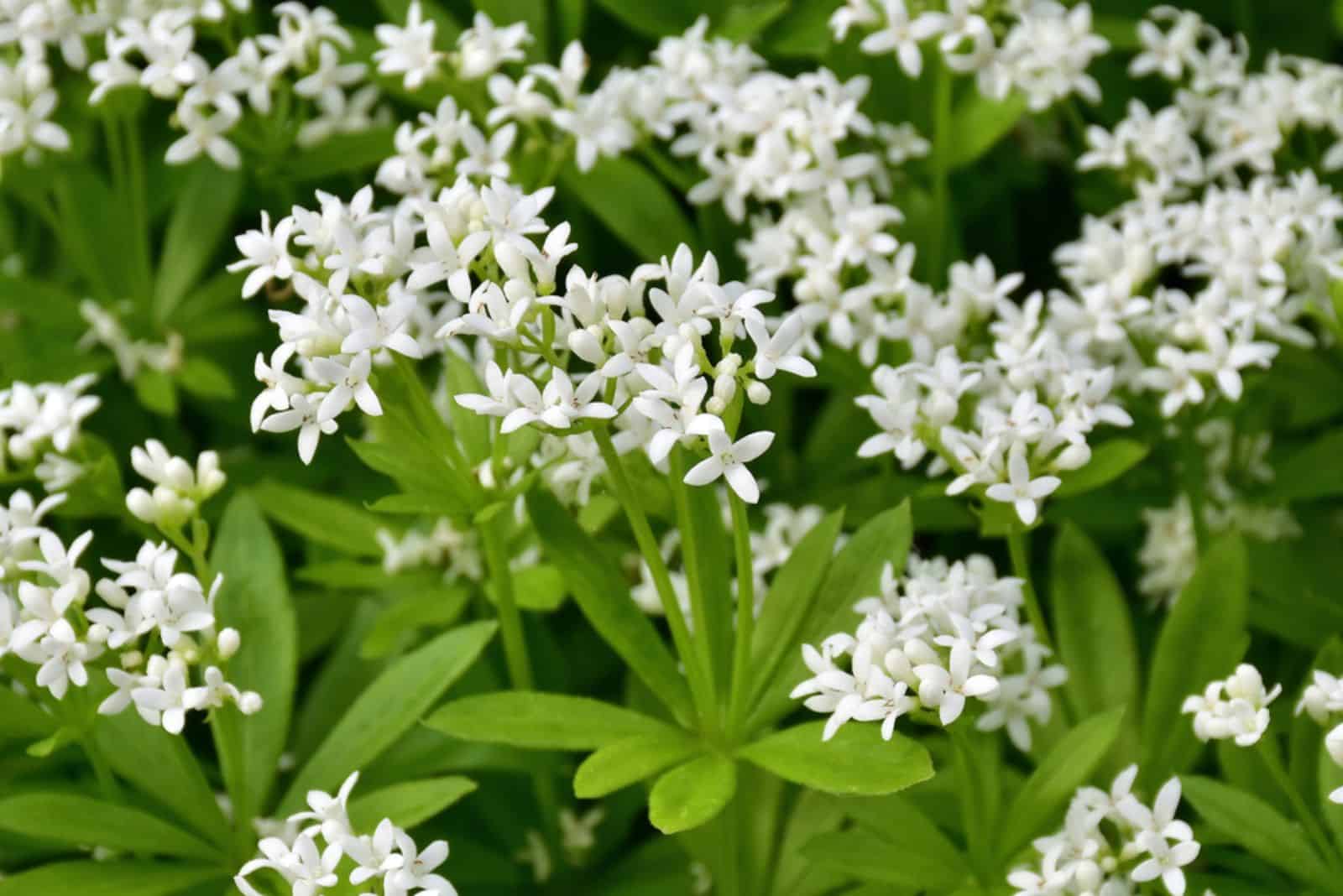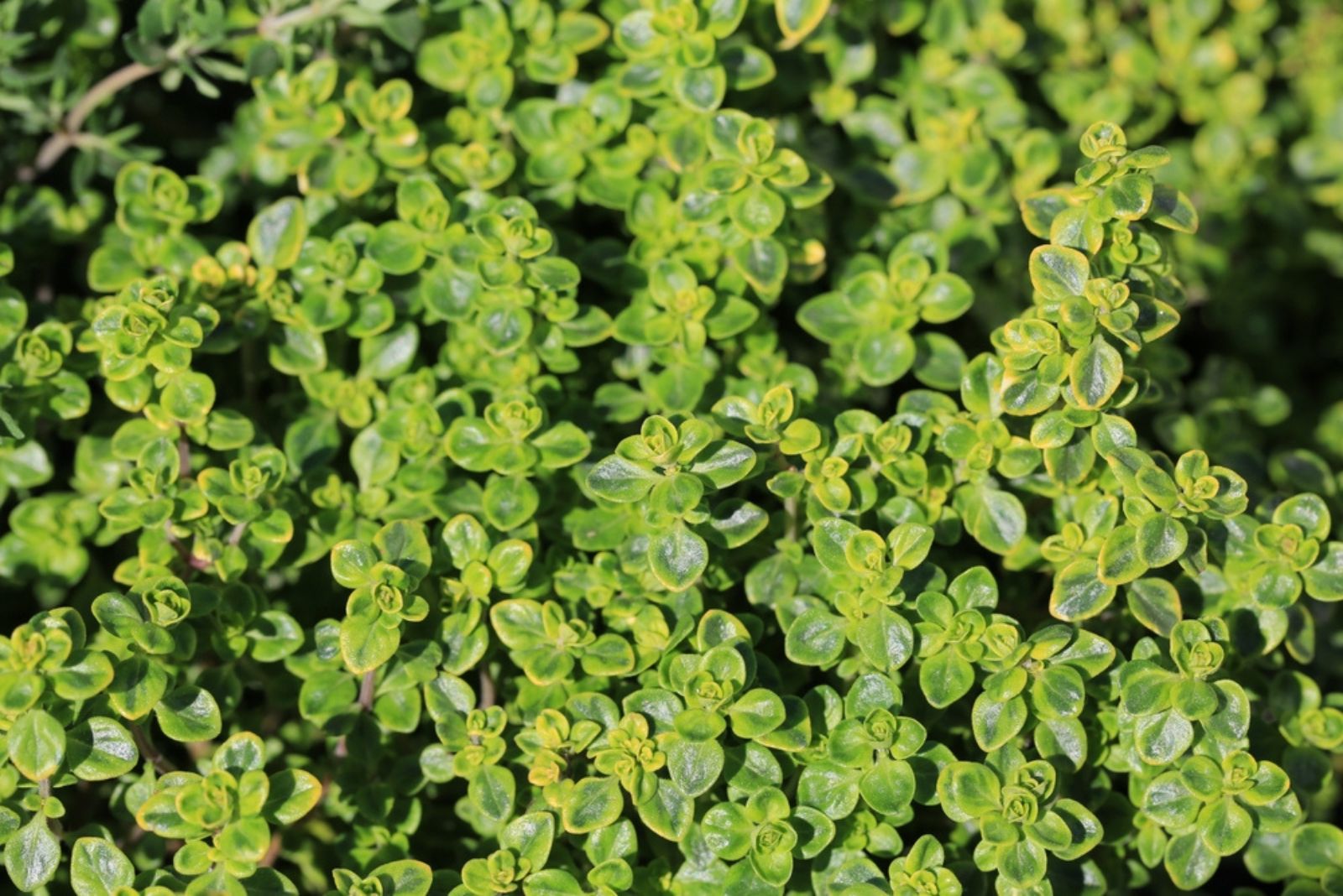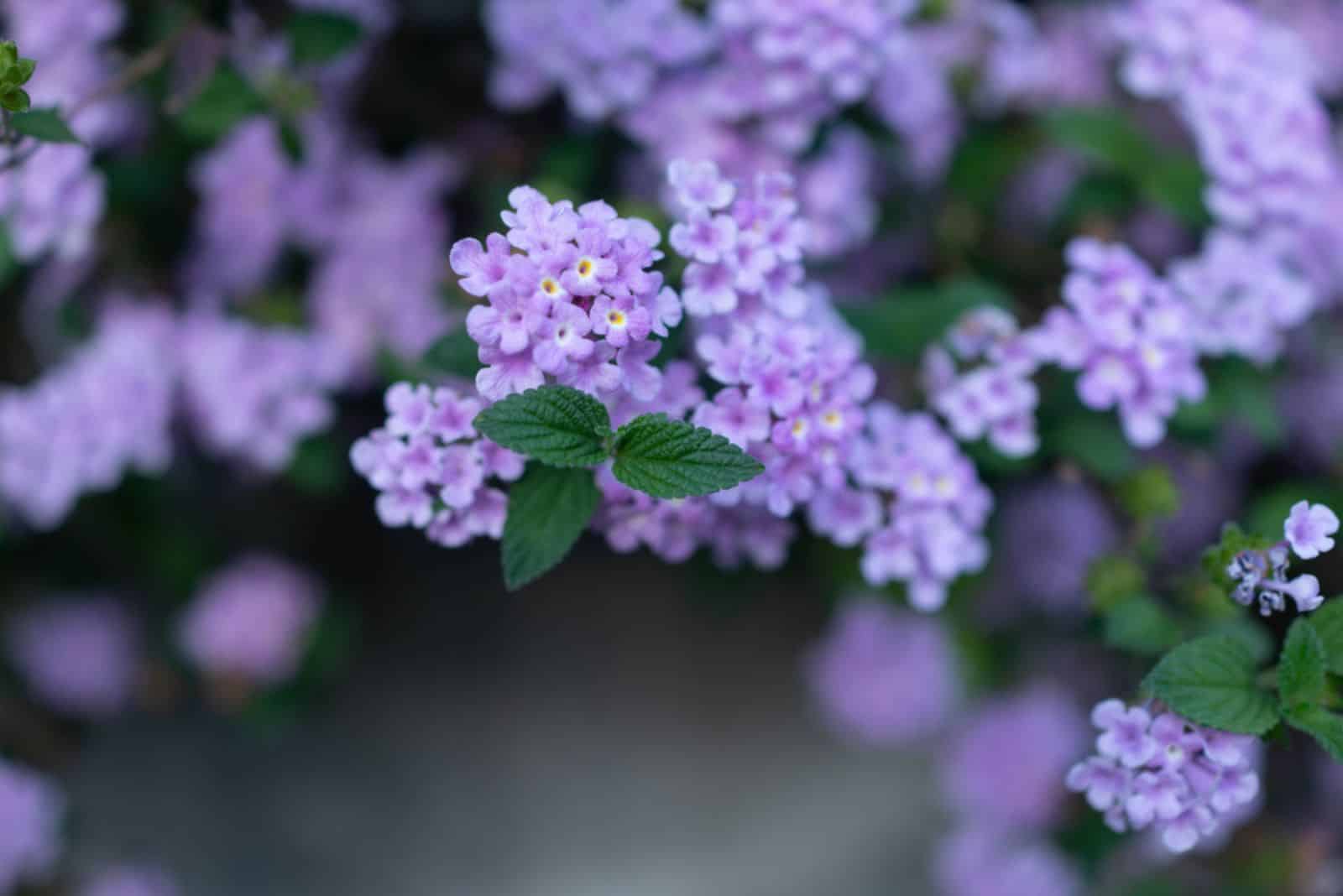One of the most gorgeous, and not to mention easiest, ways to get rid of pesky weeds is planting ground cover flowers in your garden.
These will quickly spread and suffocate the weeds before they emerge, eliminating them before they become a problem you have to deal with. You’ll have a healthy and flourishing garden in no time this way!
Here’s a list of stunning weed-eliminating plants (or suppressing ones) that will make your low-maintenance landscape pop!
1. Bugleweed
If you want a fast-spreading, low-growing ground cover, consider getting some bugleweed plants.
Bugleweed grows well in zones 4-9, thrives in full sun or partial shade, and produces purple-blue flower spikes in spring. However, many growers plant it for its foliage and cut off its blossoms for a tidier appearance.
And the best part about it is that its leaves come in various shades, from the dark-leafed ‘Black Scallop’ to the bright green ‘Blueberry Muffin.’
It can handle light foot traffic, so you can fill the gaps on your stone pathway with it, and deer and rabbits generally leave it in peace.
2. Creeping Phlox
If you’re lacking unique ground cover ideas for your sunny garden, just plant some creeping phlox. This plant handles light and partial shade like a champ, adorning every setting with a beautiful show of flowers.
It’s perfect for zones 3-10 and flowers profusely in shades of purple, pink, red, or white for 3-4 weeks come mid-spring.
Once it establishes, it becomes drought-tolerant and all it needs is well-draining, humus-rich soil to thrive. To create the best live mat in your yard, space each plant 2 feet apart.
3. Gro-Low Sumac
This plant has a unique name and an even more special appearance, making it a perfect addition to your green landscape. It spreads between 6-8 feet wide, so the good news is you won’t need many of them to fill any area.
Gro-low sumac is hardy in zones 3-9, tolerates all sorts of substrates, and grows equally well in full sun and partial shade.
And if you need more convincing, deer don’t like munching on its foliage and it turns vivid mahogany red in fall.
4. Hardy Plumbago
If you want a splash of blue amidst your flower beds, then no plant is better than the hardy plumbago, aka leadwort.
It thrives in zones 5-9, producing blossoms from mid-summer to late fall. But that’s not all! Its foliage will turn scarlet red, giving you an additional splash of color before the dreary winter.
The hardy plumbago flourishes in full sun, but likes some shade during the hot middays. Plant it in a well-draining substrate and mulch it overwinter so that it can keep coming back.
5. Lamium
If your garden gets more shade than sun, try planting some lamium. This leafy, ground cover perennial will introduce more texture and depth to your landscape, and adorn it with deep green or variegated foliage.
It even produces purple or white-colored blossoms that radiate in dark areas.
Lamium is hardy in zones 4-8, and stays evergreen in zones 6-8. The best part about this low-maintenance ground cover is that it tolerates various soil types, but flourishes in moist and nutrient-rich ones.
6. Lilyturf
If you need deep green, shrubby clumps of grass for your part or full shade yard, then monkey grass (aka lilyturf) could be your new best friend.
Just make sure to learn the differences between monkey grass and mondo grasses because they look alike, although mondo needs more sunlight to thrive.
Lilyturf thrives in USDA zones 5-10 and produces lavender blossoms from July to August.
It’s quite hardy and tolerates heat, humidity, and drought well, so you can plant it just about anywhere, although it does best in well-draining mediums.
7. Sedum
If you live in the southern regions and need some greenery for your desert landscape, try sedum!
This drought-resistant succulent is hardy in zones 3-8 and doesn’t grow far off the ground. It’s perfect for rock gardens as it requires plenty of sunlight and a well-draining soil to survive.
Sedum will even flower from early summer to fall, but gardeners mainly grow it for its foliage.
8. Sweet Woodruff
Sweet woodruff is a risky plant because it spreads really fast and will choke anything in its way, weeds first. That’s why you should give it plenty of room to grow so that it doesn’t endanger your other plants.
It is hardy in USDA zones 4-9, produces tiny white blossoms in spring, and is perfect for shady or partially shaded locations.
9. Thyme
There are so many thyme varieties we can choose from, but the trailing type is my favorite when it comes to ground covering.
Most species are hardy in zones 5-10, but some can survive in the much colder conditions of zone 2.
Blooming in spring and summer, this drought-tolerant herb is perfect for rock gardens, where it adds a splash of purple color.
10. Trailing Lantana
If you want a low-growing shrubby ground cover that will attract pollinators to your flower garden, then trailing lantana is the way to go.
This plant is hardy in zones 9-11, grows pretty fast, and is ideal if you want to cover a large area quickly.
It blossoms from spring through fall (or all the time in warmer climates), pollinators love it, and deer and rabbits don’t attack it. To keep it young and fresh for many a year, prune it annually.
Here is some more info for growing and trimming this plant:
I hope you found this article helpful.
Until next time!

